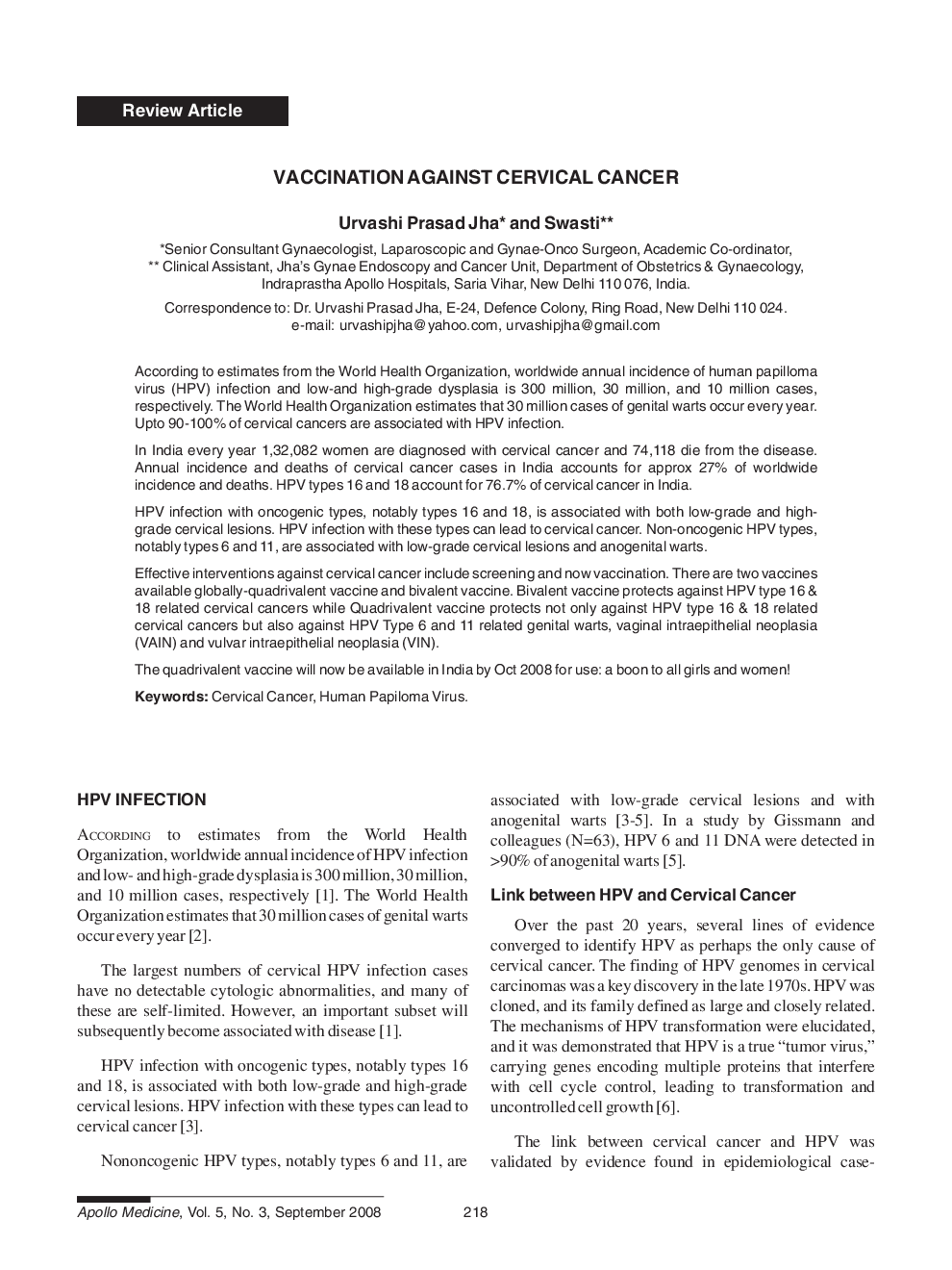| Article ID | Journal | Published Year | Pages | File Type |
|---|---|---|---|---|
| 3235278 | Apollo Medicine | 2008 | 5 Pages |
According to estimates from the World Health Organization, worldwide annual incidence of human papilloma virus (HPV) infection and low-and high-grade dysplasia is 300 million, 30 million, and 10 million cases, respectively. The World Health Organization estimates that 30 million cases of genital warts occur every year. Upto 90-100% of cervical cancers are associated with HPV infection.In India every year 1,32,082 women are diagnosed with cervical cancer and 74,118 die from the disease. Annual incidence and deaths of cervical cancer cases in India accounts for approx 27% of worldwide incidence and deaths. HPV types 16 and 18 account for 76.7% of cervical cancer in India.HPV infection with oncogenic types, notably types 16 and 18, is associated with both low-grade and high-grade cervical lesions. HPV infection with these types can lead to cervical cancer. Non-oncogenic HPV types, notably types 6 and 11, are associated with low-grade cervical lesions and anogenital warts.Effective interventions against cervical cancer include screening and now vaccination. There are two vaccines available globally-quadrivalent vaccine and bivalent vaccine. Bivalent vaccine protects against HPV type 16 & 18 related cervical cancers while Quadrivalent vaccine protects not only against HPV type 16 & 18 related cervical cancers but also against HPV Type 6 and 11 related genital warts, vaginal intraepithelial neoplasia (VAIN) and vulvar intraepithelial neoplasia (VIN).The quadrivalent vaccine will now be available in India by Oct 2008 for use: a boon to all girls and women!
